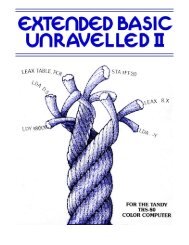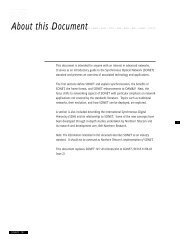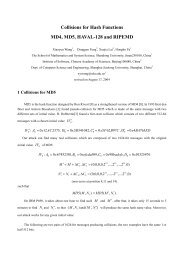The Keyed-Hash Message Authentication Code (HMAC) (FIPS-198 ...
The Keyed-Hash Message Authentication Code (HMAC) (FIPS-198 ...
The Keyed-Hash Message Authentication Code (HMAC) (FIPS-198 ...
You also want an ePaper? Increase the reach of your titles
YUMPU automatically turns print PDFs into web optimized ePapers that Google loves.
Federal Information Processing Standards Publication <strong>198</strong>2002 March 6Announcing the Standard for<strong>The</strong> <strong>Keyed</strong>-<strong>Hash</strong> <strong>Message</strong> <strong>Authentication</strong> <strong>Code</strong> (<strong>HMAC</strong>)Federal Information Processing Standards Publications (<strong>FIPS</strong> PUBS) are issued by theNational Institute of Standards and Technology (NIST) after approval by the Secretary ofCommerce pursuant to Section 5131 of the Information Technology Management ReformAct of 1996 (Public Law 104-106) and the Computer Security Act of <strong>198</strong>7 (Public Law100-235).1. Name of Standard. <strong>Keyed</strong>-<strong>Hash</strong> <strong>Message</strong> <strong>Authentication</strong> <strong>Code</strong> (<strong>HMAC</strong>) (<strong>FIPS</strong>PUB <strong>198</strong>).2. Category of Standard. Computer Security Standard. Subcategory. Cryptography.3. Explanation. This standard specifies an algorithm for applications requiring messageauthentication. <strong>Message</strong> authentication is achieved via the construction of a messageauthentication code (MAC). MACs based on cryptographic hash functions are known as<strong>HMAC</strong>s.<strong>The</strong> purpose of a MAC is to authenticate both the source of a message and its integritywithout the use of any additional mechanisms. <strong>HMAC</strong>s have two functionally distinctparameters, a message input and a secret key known only to the message originator andintended receiver(s). Additional applications of keyed-hash functions include their use inchallenge-response identification protocols for computing responses, which are a functionof both a secret key and a challenge message.An <strong>HMAC</strong> function is used by the message sender to produce a value (the MAC) that isformed by condensing the secret key and the message input. <strong>The</strong> MAC is typically sent tothe message receiver along with the message. <strong>The</strong> receiver computes the MAC on thereceived message using the same key and <strong>HMAC</strong> function as was used by the sender, andcompares the result computed with the received MAC. If the two values match, themessage has been correctly received, and the receiver is assured that the sender is amember of the community of users that share the key.<strong>The</strong> <strong>HMAC</strong> specification in this standard is a generalization of <strong>HMAC</strong> as specified inInternet RFC 2104, <strong>HMAC</strong>, <strong>Keyed</strong>-<strong>Hash</strong>ing for <strong>Message</strong> <strong>Authentication</strong>, and ANSIX9.71, <strong>Keyed</strong> <strong>Hash</strong> <strong>Message</strong> <strong>Authentication</strong> <strong>Code</strong>.4. Approving Authority. Secretary of Commerce.iii






